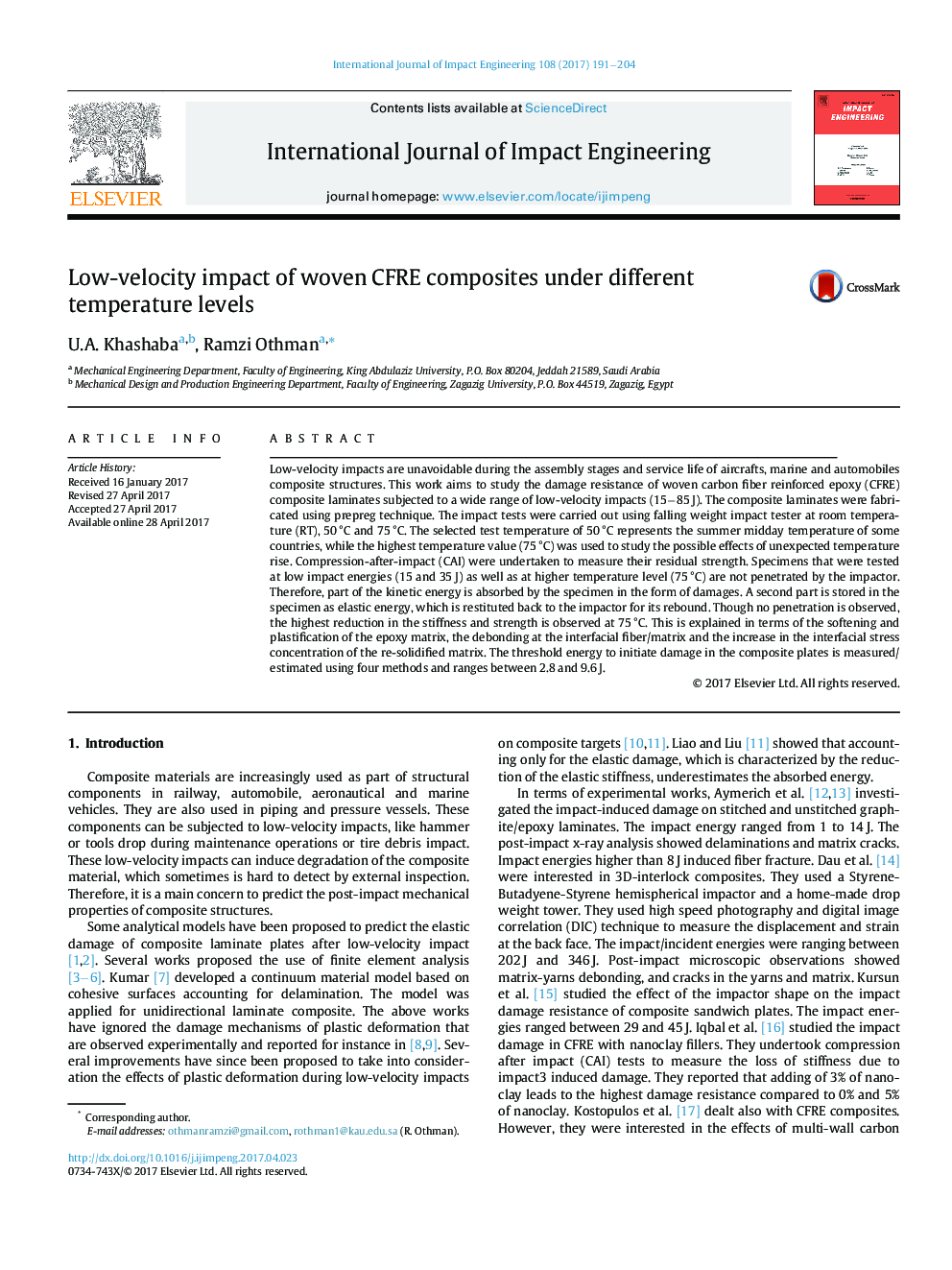| کد مقاله | کد نشریه | سال انتشار | مقاله انگلیسی | نسخه تمام متن |
|---|---|---|---|---|
| 5015520 | 1464043 | 2017 | 14 صفحه PDF | دانلود رایگان |

- Falling weight impact tests are carried out on CFRE composites with impact energies ranging from 15 to 85 J at room temperature, 50â°C and 75â°C.
- Almost all impact energy is absorbed at room and 50 for impact energies higher than 35Â J. Penetration is observed at room and 50 for impact energies higher than 35Â J.
- At 75 °C, no penetration is observed though the highest reduction in the stiffness is recorded.
- The threshold energy to initiate damage in the composite plates is measured/estimated using four methods and ranges between 2.8 and 9.6Â J.
Low-velocity impacts are unavoidable during the assembly stages and service life of aircrafts, marine and automobiles composite structures. This work aims to study the damage resistance of woven carbon fiber reinforced epoxy (CFRE) composite laminates subjected to a wide range of low-velocity impacts (15-85 J). The composite laminates were fabricated using prepreg technique. The impact tests were carried out using falling weight impact tester at room temperature (RT), 50â°C and 75â°C. The selected test temperature of 50â°C represents the summer midday temperature of some countries, while the highest temperature value (75â°C) was used to study the possible effects of unexpected temperature rise. Compression-after-impact (CAI) were undertaken to measure their residual strength. Specimens that were tested at low impact energies (15 and 35 J) as well as at higher temperature level (75â°C) are not penetrated by the impactor. Therefore, part of the kinetic energy is absorbed by the specimen in the form of damages. A second part is stored in the specimen as elastic energy, which is restituted back to the impactor for its rebound. Though no penetration is observed, the highest reduction in the stiffness and strength is observed at 75°C. This is explained in terms of the softening and plastification of the epoxy matrix, the debonding at the interfacial fiber/matrix and the increase in the interfacial stress concentration of the re-solidified matrix. The threshold energy to initiate damage in the composite plates is measured/estimated using four methods and ranges between 2.8 and 9.6 J.
Journal: International Journal of Impact Engineering - Volume 108, October 2017, Pages 191-204